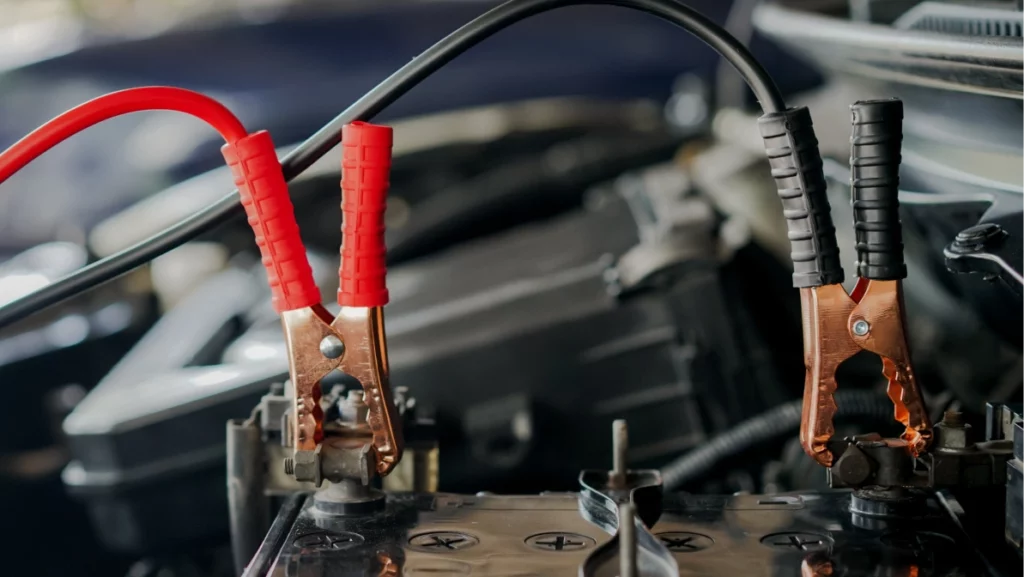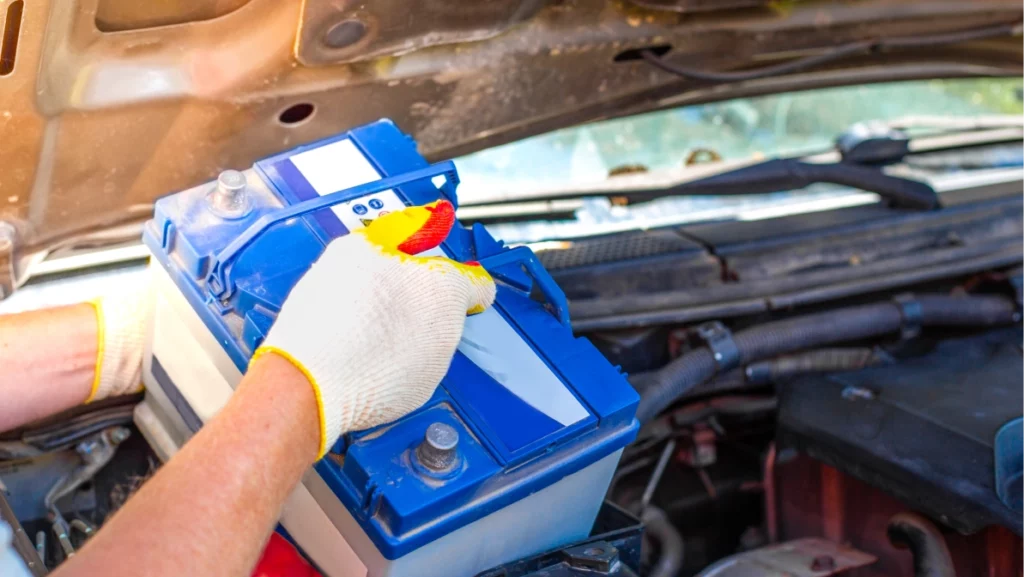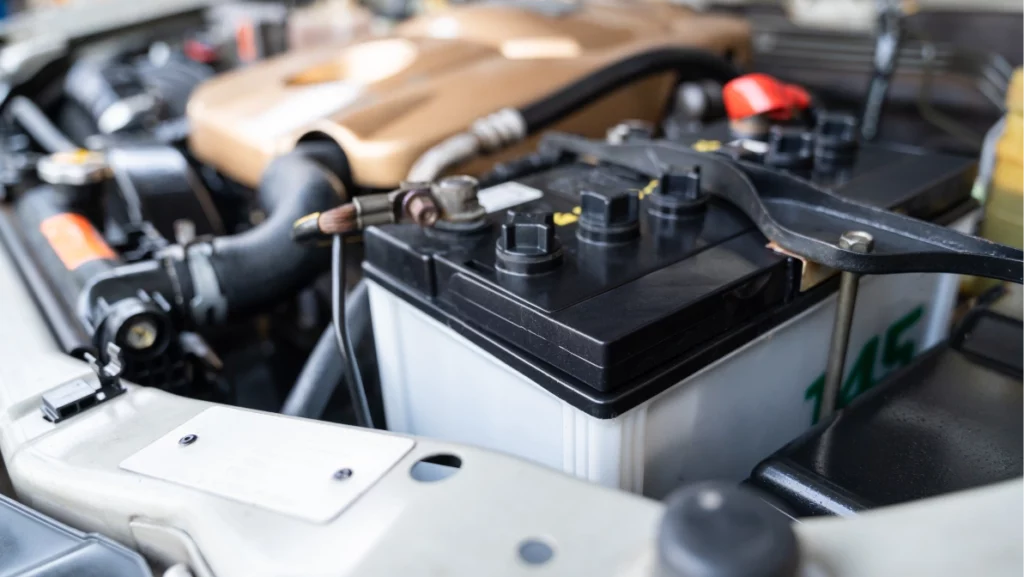Replacing a car battery might sound intimidating, but with the right knowledge and tools, it’s a task that anyone can handle. Knowing how to replace a car battery will save you time and money, and it will also keep you prepared for any unexpected battery issues down the road.
This comprehensive auto battery replacement guide will walk you through everything you need to know, from identifying when your battery needs changing to putting a new battery in car properly. Let’s get started!
How Do You Know When to Replace a Car Battery?
Understanding when your car battery is reaching the end of its life is key to avoiding unexpected breakdowns. Some common signs include a slow engine crank, dim headlights, or the battery warning light on your dashboard. If your vehicle struggles to start in cold weather or the battery is older than three years, it might be time for a replacement battery for your car.
Another telltale sign is corrosion on the terminals or leaking battery acid. These issues can prevent your battery from charging properly and can lead to costly repairs if not addressed promptly. Staying alert to these signs ensures you’re never caught off guard on the road.
What Tools Are Required for Car Battery Replacement?

Before you begin replacing your car battery, gather the necessary tools to make the job easier and safer.
Basic Hand Tools
A socket wrench or adjustable wrench is essential for loosening the battery terminals. You may also need a screwdriver for removing the battery hold-down bracket.
Safety Equipment
Safety goggles and gloves are important for protecting yourself from battery acid and accidental sparks. A wire brush can also help clean corrosion from the terminals.
How to Prepare Your Vehicle Before Replacing the Battery
Before you start, make sure your vehicle is parked on a flat, stable surface. Turn off the engine and remove the keys from the ignition to avoid accidental electrical contact. Open the hood and locate your car battery, taking note of which way do batteries go in to ensure correct installation later.
It’s a good idea to have a small container nearby to keep track of any nuts, bolts, or washers you remove during the process. This will help prevent losing any essential parts and make putting battery in cars easier.
Step-by-Step Guide: How to Replace a Car Battery

Replacing a car battery might seem daunting, but with the right approach, it’s easier than many drivers expect. Is it hard to change a car battery? It’s manageable when you follow the steps carefully.
How to Disconnect the Old Battery
Begin by disconnecting the negative terminal (usually marked with a minus sign) using your wrench. This prevents accidental sparks. Next, remove the positive terminal. Carefully lift out the old battery, keeping it upright to avoid spilling any battery acid.
How to Install the New Car Battery
Position the new battery securely in the tray, ensuring it’s correctly oriented based on which way the batteries go in. Attach the positive terminal first and tighten it securely, followed by the negative terminal. Reinstall the battery hold-down bracket to keep the new battery in place.
What Should You Do After Installing a New Car Battery?
After putting a new battery in car, double-check all connections to ensure they are secure and corrosion-free. Start the engine to confirm that everything is working properly. If the vehicle starts easily and the electrical systems are functioning normally, you have completed the auto battery replacement guide successfully.
It’s a good idea to reset any electronic settings in your vehicle, such as the clock and radio presets, as they may have been lost during the battery change.
Car Battery Maintenance Tips to Extend Battery Life

Taking care of your new battery will help you avoid frequent replacements and keep your vehicle running smoothly.
Here are some easy tips to follow.
Keep the Battery Clean
Corrosion can build up on terminals and cables, so it’s essential to check and clean them regularly with a wire brush and a baking soda solution.
Drive Regularly
Frequent short trips can wear out your battery faster. If possible, drive your vehicle for at least 20 minutes regularly to keep the battery charged and healthy.
Check the Battery Voltage
Use a multimeter to test the battery’s voltage periodically. A healthy battery should read around 12.6 volts when fully charged.
Avoid Leaving Electronics On
Leaving headlights, interior lights, or accessories on when the engine is off can quickly drain your battery. Be sure to turn everything off before leaving the car.
When Should You Get Professional Help with Car Battery Replacement?
Although replacing a battery is a manageable task, some situations are best handled by professionals. If you’re unsure about the correct procedure, the battery location is difficult to access, or the replacement involves complex electrical systems, consider seeking expert assistance.
A professional mechanic can ensure the replacement is done safely and accurately. They will also perform a comprehensive check to verify that no other issues are affecting your vehicle’s electrical system.
Stay Confident and Safe with Your Car Battery Replacement
Replacing a car battery is a skill every car owner can master. By understanding how to replace car battery and using the right tools needed to change car battery, you can extend the life of your vehicle and keep it running smoothly. From recognizing when it’s time for battery car replacement to learning how to install a battery safely, this guide has covered it all.
For drivers in Houston, TX, if you’re not confident in your car battery replacement skills or want the job done by a trusted professional mechanic in Houston, TX, visit Status Automotive & Collision. Their team of experts provides reliable car battery replacement and complete auto care services to keep your vehicle in top shape. Contact us today!




